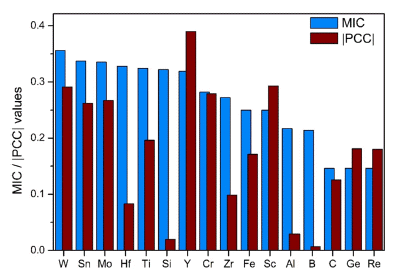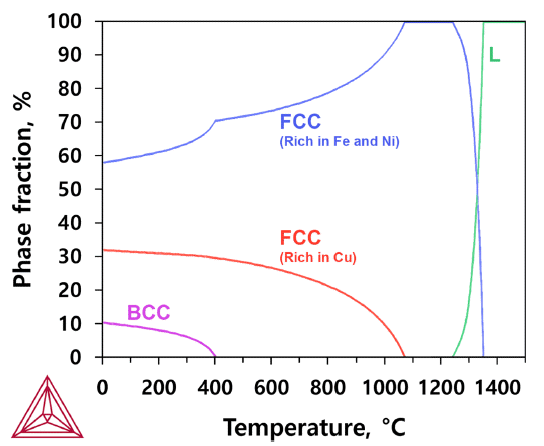Search
- Page Path
- HOME > Search
- [Korean]
- Machine Learning-based Data Analysis for Designing High-strength Nb-based Superalloys
- Eunho Ma, Suwon Park, Hyunjoo Choi, Byoungchul Hwang, Jongmin Byun
- J Powder Mater. 2023;30(3):217-222. Published online June 1, 2023
- DOI: https://doi.org/10.4150/KPMI.2023.30.3.217

- 709 View
- 11 Download
-
 Abstract
Abstract
 PDF
PDF Machine learning-based data analysis approaches have been employed to overcome the limitations in accurately analyzing data and to predict the results of the design of Nb-based superalloys. In this study, a database containing the composition of the alloying elements and their room-temperature tensile strengths was prepared based on a previous study. After computing the correlation between the tensile strength at room temperature and the composition, a material science analysis was conducted on the elements with high correlation coefficients. These alloying elements were found to have a significant effect on the variation in the tensile strength of Nb-based alloys at room temperature. Through this process, a model was derived to predict the properties using four machine learning algorithms. The Bayesian ridge regression algorithm proved to be the optimal model when Y, Sc, W, Cr, Mo, Sn, and Ti were used as input features. This study demonstrates the successful application of machine learning techniques to effectively analyze data and predict outcomes, thereby providing valuable insights into the design of Nb-based superalloys.
- [English]
- Fabrication of FeCuNi alloy by mechanical alloying followed by consolidation using high-pressure torsion
- Peyman Asghari-Rad, Yongju Kim, Nhung Thi-Cam Nguyen, Hyoung Seop Kim
- J Korean Powder Metall Inst. 2020;27(1):1-7. Published online February 1, 2020
- DOI: https://doi.org/10.4150/KPMI.2020.27.1.1

- 1,106 View
- 4 Download
- 1 Citations
-
 Abstract
Abstract
 PDF
PDF In this research, a new medium-entropy alloy with an equiatomic composition of FeCuNi was designed using a phase diagram (CALPHAD) technique. The FeCuNi MEA was produced from pure iron, copper, and nickel powders through mechanical alloying. The alloy powders were consolidated via a high-pressure torsion process to obtain a rigid bulk specimen. Subsequently, annealing treatment at different conditions was conducted on the four turn HPT-processed specimen. The microstructural analysis indicates that an ultrafine-grained microstructure is achieved after post-HPT annealing, and microstructural evolutions at various stages of processing were consistent with the thermodynamic calculations. The results indicate that the post-HPT-annealed microstructure consists of a dual-phase structure with two FCC phases: one rich in Cu and the other rich in Fe and Ni. The kernel average misorientation value decreases with the increase in the annealing time and temperature, indicating the recovery of HPT-induced dislocations.
-
Citations
Citations to this article as recorded by- Effects of nickel content and annealing temperature on the magnetic characteristics of nanostructured FeCu alloys
Abderrahmane Younes
Journal of Materials Science: Materials in Electronics.2024;[Epub] CrossRef
- Effects of nickel content and annealing temperature on the magnetic characteristics of nanostructured FeCu alloys
TOP
 KPMI
KPMI


 First
First Prev
Prev


